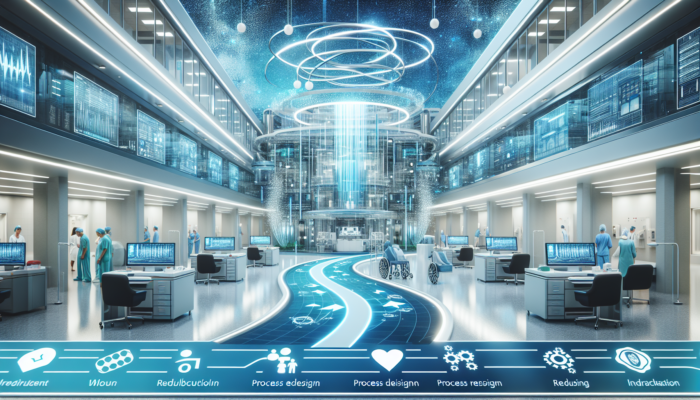Shaping the Future of Healthcare: The Role of EHR in Healthcare Data Management
In the ever-evolving landscape of healthcare, the use of electronic health records (EHRs) has emerged as a vital tool in managing patient information. As technology continues to advance, EHRs play a pivotal role in shaping the future of healthcare by revolutionizing data management. This article delves into the importance of EHRs and their impact on healthcare data management.
Introduction to Electronic Health Records (EHRs)
Electronic Health Records, commonly referred to as EHRs, are comprehensive digital records of patients’ health information. They contain a wide array of data, including medical history, medications, allergies, test results, and more. EHRs provide a holistic view of a patient’s health, allowing healthcare professionals to make informed decisions and deliver timely, personalized care.
EHRs have transformed the way healthcare providers manage patient information. With the transition from paper-based records to digital records, healthcare professionals can now access patient data instantly, eliminating the need for physical paper records. This accessibility enhances the efficiency of healthcare providers, enabling them to retrieve critical information faster, leading to improved patient outcomes.
Moreover, EHRs facilitate seamless integration and sharing of patient data across various healthcare settings, promoting data interoperability. This interoperability allows for better communication between healthcare professionals and enables coordinated care. It also reduces the chances of medical errors due to incomplete or inaccurate information.
Advantages of EHRs in Healthcare Data Management
-
Accessibility and Efficiency: EHRs offer instant access to patient data, eliminating the need for physical paper records. This accessibility enhances the efficiency of healthcare providers, enabling them to retrieve critical information faster, leading to improved patient outcomes.
- Healthcare providers can access patient records remotely, allowing for quick decision-making and timely interventions.- EHRs reduce the time spent searching for information, enabling healthcare professionals to focus more on patient care.
-
Data Integration and Interoperability: EHRs enable seamless integration and sharing of patient data across various healthcare settings. This interoperability facilitates better communication between healthcare professionals and allows for coordinated care. It also reduces the chances of medical errors due to incomplete or inaccurate information.
- EHRs promote collaboration among healthcare providers by providing a central repository for patient data, ensuring everyone has access to the same information.- Interoperability between EHR systems allows for efficient transfer of patient data, minimizing duplication of tests and procedures.
-
Improved Patient Safety: EHRs promote patient safety by reducing medication errors and adverse events. Through features like drug interaction alerts, allergy notifications, and dosage recommendations, EHRs help healthcare providers make safer and more informed decisions.
- EHRs provide real-time alerts and reminders, helping healthcare professionals avoid potential medication errors and adverse events.- Integration of decision support tools in EHRs assists with accurate medication prescribing, reducing the risk of adverse drug events.
-
Enhanced Decision-Making: EHRs provide real-time access to a patient’s medical history, test results, and treatment plans. This comprehensive information equips healthcare professionals with a complete overview of the patient’s health, aiding in making accurate diagnoses and developing effective treatment plans.
- EHRs enable healthcare professionals to view a patient's complete medical history, empowering them to make informed decisions based on comprehensive data.- Access to real-time data allows for timely interventions and avoids delays in diagnosis and treatment.
-
Efficient Clinical Documentation: EHRs streamline the documentation process by automating certain tasks like capturing patient vitals, generating progress notes, and documenting procedures. This not only saves time for healthcare professionals but also ensures accuracy and completeness of patient records.
- Automated documentation reduces the risk of errors and omissions in patient records, ensuring accurate and up-to-date information.- Templates and standardized forms in EHRs improve the consistency and completeness of clinical documentation.
The Role of EHRs in Healthcare Data Management
-
Data Storage and Organization: EHRs serve as a centralized repository for patient data, replacing traditional paper-based records. These digital records allow for efficient storage, organization, and retrieval of large volumes of healthcare data. Healthcare providers can search for specific information, track changes over time, and analyze data trends to personalize patient care.
- EHRs enable healthcare providers to store vast amounts of patient data securely, reducing physical storage space and minimizing the risk of data loss.- Search functionalities in EHRs allow for quick retrieval of specific information, improving efficiency in data management.
-
Data Security and Privacy: EHRs incorporate robust security measures to protect patient data from unauthorized access or breaches. Advanced encryption, user authentication, and audit trails ensure the confidentiality and integrity of patient information. Compliance with data protection regulations, such as HIPAA (Health Insurance Portability and Accountability Act), further safeguards patient privacy.
- EHRs employ encryption techniques to protect patient data from unauthorized access, ensuring data confidentiality.- User authentication protocols ensure that only authorized individuals have access to patient records, minimizing the risk of data breaches.
-
Data Analytics and Research: EHRs contribute to healthcare advancements through data analytics and research. Aggregated and de-identified patient data stored in EHRs can be analyzed to identify patterns, trends, and outcomes. This valuable information aids in clinical research, population health management, and the development of evidence-based practices.
- EHRs provide a wealth of data that can be analyzed to identify population health trends and develop targeted interventions.- Researchers can leverage EHR data to conduct large-scale studies and generate evidence to guide clinical practice.
-
Telehealth and Remote Monitoring: EHRs play a pivotal role in facilitating telehealth services and remote patient monitoring. With EHR integration, healthcare professionals can remotely access patient data, conduct virtual consultations, and monitor vital signs. This capability expands access to healthcare, particularly for individuals in remote areas or those with limited mobility.
- EHRs enable healthcare providers to remotely monitor patients' health conditions, allowing for early detection of abnormalities and timely interventions.- Telehealth services integrated with EHRs improve access to healthcare for patients who face barriers to in-person visits, such as those living in rural areas.
-
Patient Engagement and Empowerment: EHRs empower patients to actively participate in their healthcare journey. Through patient portals, individuals can access their own health records, review test results, schedule appointments, and communicate with their healthcare providers. This increased engagement fosters a collaborative approach to healthcare, leading to improved patient satisfaction and outcomes.
- Patient portals in EHRs enable patients to access their health information, empowering them to take ownership of their health and make informed decisions.- Communication features in EHRs facilitate secure messaging between patients and healthcare providers, improving the patient-provider relationship.
Conclusion
The future of healthcare is being shaped by the integration and utilization of electronic health records (EHRs) in healthcare data management. EHRs offer numerous advantages in terms of accessibility, efficiency, patient safety, and decision-making. They serve as a central repository for patient information, ensuring its secure storage, organization, and retrieval. With the ability to facilitate data analytics, telehealth services, and patient engagement, EHRs are revolutionizing the way healthcare is delivered and improving patient outcomes. Embracing this technology and utilizing it effectively will be crucial for healthcare providers in shaping a more efficient and patient-centric future.
FAQ
- What are Electronic Health Records (EHRs)?
- Electronic Health Records, commonly referred to as EHRs, are comprehensive digital records of patients’ health information. They contain a wide array of data, including medical history, medications, allergies, test results, and more.
- How do EHRs improve healthcare data management?
- EHRs improve healthcare data management by offering instant access to patient data, eliminating the need for physical paper records. They also facilitate seamless integration and sharing of patient data across various healthcare settings, promoting data interoperability.
- How do EHRs enhance patient safety?
- EHRs enhance patient safety by reducing medication errors and adverse events. They provide real-time alerts and reminders, helping healthcare professionals avoid potential medication errors and adverse events. Integration of decision support tools in EHRs assists with accurate medication prescribing, reducing the risk of adverse drug events.
- How do EHRs contribute to efficient clinical documentation?
- EHRs streamline the documentation process by automating certain tasks like capturing patient vitals, generating progress notes, and documenting procedures. This saves time for healthcare professionals and ensures accuracy and completeness of patient records.


